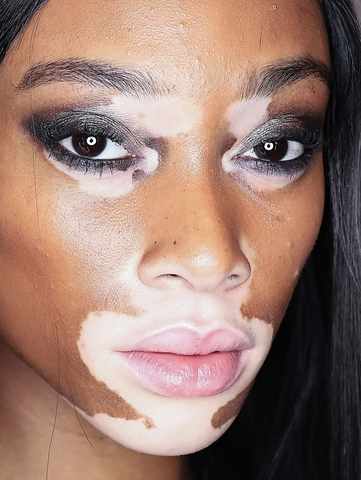Is Vitiligo a Genetic Disease?
Vitiligo is a skin disease that results in the loss of skin pigmentation. Hair on these areas can also lose pigment and appear white. On average, the onset of vitiligo is in the mid-twenties, but it can develop at any age.
The number and size of patches vary from person to person. It tends to progress over time, with larger areas of the skin losing pigment. Nevertheless, the patches can remain stable or even improve in some affected individuals.
Vitiligo was first described by Claude Nicolas Le Cat in 1765. Nonetheless, the first specific consideration of a genetic component in vitiligo did not arise until 1950, when two researchers simultaneously reported a total of eight families with multiple relatives affected by vitiligo. One noted that in his affected family, vitiligo appeared to exhibit dominant inheritance, after intermarriage to a family with apparent recessive thyroid disease, a very early recognition of what would now be considered complex inheritance.
Complex inheritance means that a genetic component is involved, however, it doesn’t follow the same rules of something being hereditary. This denotes that two or more abnormal genes are involved, whereas hereditary conditions develop because of only one abnormal gene.
Research shows that about 7 in 100 people genetically linked to a person with vitiligo will also have the condition. Also, people with a genetic link to the disease will develop vitiligo earlier in life and the skin condition will be more widespread than people without a genetic cause.
Families with many members with vitiligo also have a higher incidence of autoimmune diseases, which means that genetics is an inherent risk factor for vitiligo and autoimmune diseases that are associated with the skin condition.
Who Can Get Vitiligo?
The risk of developing vitiligo in the general population is extremely common, which is about 1 in 100 people. In comparison, the risk for juvenile diabetes is 1 in 500, and multiple sclerosis is 1 in 1000. Because vitiligo is so widespread and visible, it is not unusual for you to see multiple people with it when in large crowds, like at the mall.
It can develop to anyone at any age. There is no predisposition in terms of who can develop the condition. Thus, it can affect anyone, whatever their skin colour or ethnic origin, but will be more visually prominent in those with darker skin. People with fairer skin colour may not even realize that they have vitiligo.
Both women and men are at similar risk for getting vitiligo, and over half of patients who have vitiligo got their first spots before the age of 20.
Am I Genetically Susceptible to Develop Vitiligo?
It is understandable to wonder about this since vitiligo sometimes appears to run in families. It is also unsurprising that someone with symptoms of vitiligo may want to know if they will pass them on to their children.
Researchers have been looking at this phenomenon of hereditary aspects of vitiligo for many years. In general, roughly 30 in 100 patients with vitiligo will have a positive family history. This figure generally refers to first- or second-degree relatives.
What Increases the Risk of Getting Vitiligo?
There are people who have an increased risk of developing a type of vitiligo called non-segmental vitiligo. This is the most common type of vitiligo.
Your risk increases if you have:
- Blood relatives have certain autoimmune diseases, especially one that affects the thyroid or alopecia areata.
- Blood relatives have vitiligo.
- Melanoma or non-Hodgkin lymphoma.
- Treatments for melanoma with immunotherapy.
Developing vitiligo while treating melanoma with immunotherapy is thought to be a good sign. Research indicates that patients who develop vitiligo while undergoing this treatment have higher survival rates.
Vitiligo also evolves more often in people who have moles on their skin called halo nevi. This type of mole has a white ring around it.
What Do You Need to Do?
A dermatologist can treat vitiligo. They can also monitor you for other diseases and refer you to other doctors if necessary.
We advise that you schedule an appointment with your dermatologist and start making the required lifestyle adjustments as soon as you see the first indications of vitiligo.

